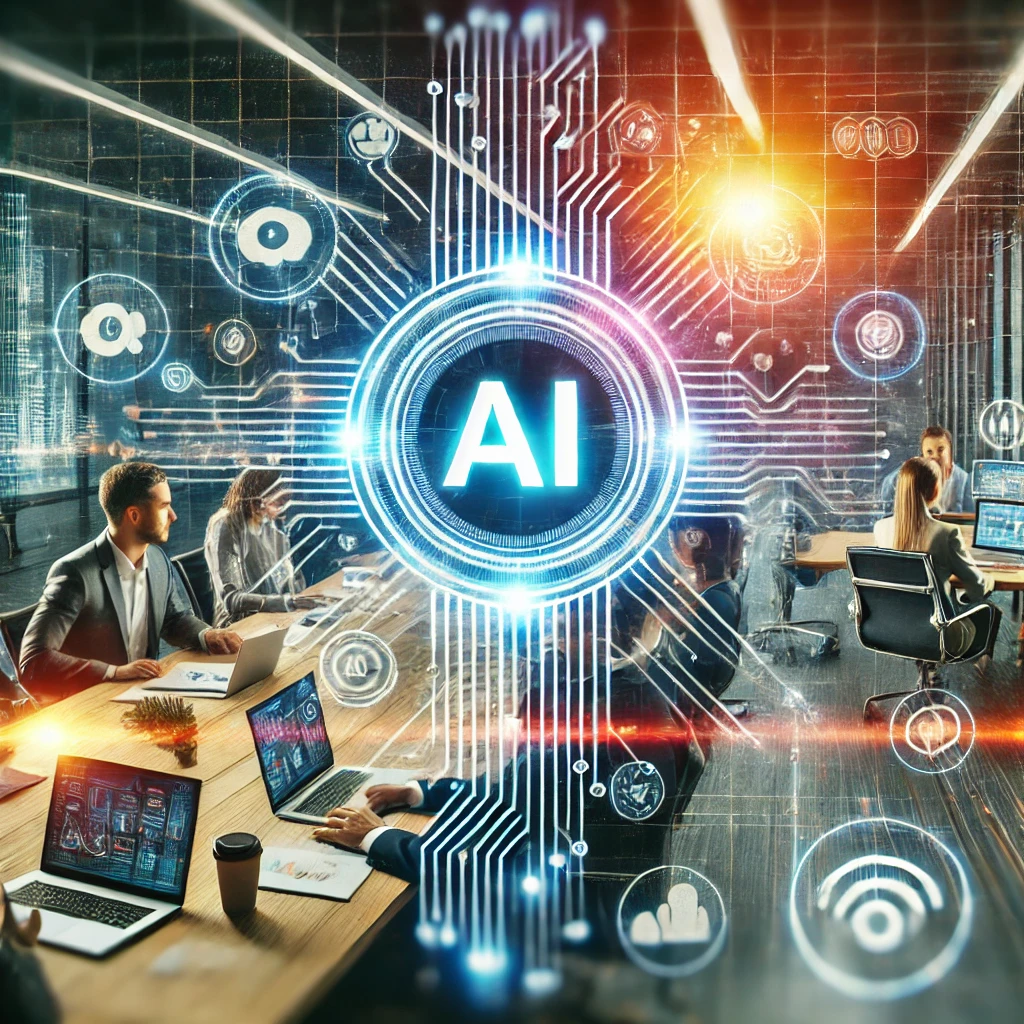6. Leveraging Artificial Intelligence and Machine Learning
Artificial Intelligence (AI) and Machine Learning (ML) are powerful tools that enable organizations and communities to solve complex challenges with unprecedented precision. These technologies are integral to tech-for-good initiatives in various fields:
- Disaster Relief and Prediction: AI-driven predictive analytics help in identifying patterns in weather data and seismic activity to predict natural disasters like earthquakes, hurricanes, and floods. Early warnings can save countless lives by facilitating timely evacuations and resource allocation.
- Poverty Mapping: Machine learning algorithms analyze satellite imagery and economic data to map areas with the highest poverty levels, enabling governments and NGOs to direct resources effectively. Tools like the Poverty Prediction Map use AI to understand socio-economic patterns and inform policy decisions.
- Ethical Concerns: While AI offers transformative potential, it also raises ethical issues, such as data privacy and bias. Ensuring fairness and transparency in AI systems is crucial, particularly in applications that impact vulnerable populations.
AI and ML provide actionable insights that are not only improving efficiency but also making social programs and crisis management more effective and inclusive.
7. Improving Social Equality with Technology

Technology has the power to bridge social divides and create more equitable opportunities for all. Here’s how tech is advancing social equality:
- Financial Inclusion: Financial technology, or fintech, provides services like digital banking and mobile payments to people who lack access to traditional banking. Platforms like M-Pesa have empowered millions in Africa by providing them with a secure way to save and transfer money.
- Blockchain for Transparency: Blockchain technology supports secure, transparent transactions that can prevent corruption in areas like charity donations and public funding. By keeping a permanent record of transactions, blockchain ensures accountability.
- Human Rights Protection: Tech solutions like mobile apps and secure platforms allow activists to document human rights abuses and report them anonymously. These tools also connect people with resources and legal support in real-time.
By making financial, legal, and social services more accessible, technology is helping to create a fairer, more inclusive society.
8. Civic Engagement and Digital Democracy
Technology is reshaping the way people engage with governments and participate in democracy. Tech for good in civic engagement is fostering a more transparent and participatory political landscape.
- Digital Platforms for Public Discourse: Platforms like Change.org and social media channels allow citizens to voice their opinions, mobilize support, and drive social movements. Governments and organizations can use these insights to shape policies.
- Transparency in Governance: Digital tools enable transparency by making government data accessible to the public. For instance, open-data platforms allow citizens to view budgets, spending, and other government activities.
- Digital Voting: In some countries, secure digital voting systems are being tested to make elections more accessible and to counter logistical challenges. Blockchain technology is also being explored to secure voting data, ensuring that elections remain free from tampering.
By empowering citizens with information and channels for involvement, technology is making governance more democratic and inclusive.
9. Addressing the Digital Divide
The digital divide refers to the gap between those with access to digital technologies and those without. This divide exacerbates inequality, as those without internet access lack opportunities in education, employment, and social services.
- Bringing Internet Access to Remote Areas: Organizations like Google and SpaceX are launching initiatives like Project Loon and Starlink to provide high-speed internet to remote and underserved regions.
- Affordable Devices and Connectivity: Programs that offer low-cost smartphones and laptops, as well as subsidized internet plans, are helping low-income households access the digital world.
- Digital Literacy Programs: Providing people with the skills to use digital tools effectively is essential. Governments, NGOs, and private companies run training programs that teach everything from basic internet use to advanced software skills.
Addressing the digital divide ensures that technological advancements benefit everyone, not just those with the resources to access them.
10. Ethical Technology Development
As technology evolves, so do concerns about privacy, security, and ethical implications. Ethical tech development emphasizes responsible innovation, ensuring that technology benefits society without causing harm.
- Privacy Protection: In a world where data is constantly being collected, maintaining user privacy is critical. Techniques like data encryption, anonymization, and blockchain are being used to safeguard personal information.
- Ethics in AI: AI applications must be designed to avoid biases that could lead to discrimination. Fairness in AI models ensures that outcomes do not unfairly disadvantage certain groups, particularly in areas like hiring and law enforcement.
- Transparent Development Practices: Companies are increasingly being held accountable for developing technology that aligns with ethical standards. By implementing ethics committees, transparency measures, and inclusive practices, organizations can foster public trust.
Balancing innovation with ethical considerations is essential to developing technology that respects individual rights and societal well-being.
11. Tech for Good in the Workplace
Workplace technology doesn’t just increase efficiency—it can also create healthier and more inclusive environments.
- Mental Health Support: Apps that focus on mental wellness, such as Headspace and Calm, offer employees support to manage stress. Many organizations provide access to mental health resources through platforms that prioritize employee well-being.
- Diversity and Inclusion: AI tools are being used to identify and reduce biases in hiring processes. By analyzing job descriptions, recruitment algorithms, and interview data, these tools can foster a more diverse and inclusive workforce.
- Environmental Responsibility: Companies can use technology to track and reduce their carbon footprints, including energy management systems that monitor consumption and identify areas for improvement.
With these advancements, technology is creating workplace cultures that prioritize well-being, fairness, and environmental responsibility.
12. Data Science for Social Good
Data science plays a significant role in understanding and addressing social challenges by transforming complex data into actionable insights.
- Humanitarian Response and Crisis Mapping: During disasters, data scientists create crisis maps using real-time information from social media, satellite images, and ground reports. These maps assist relief organizations in delivering aid efficiently.
- Open Data Initiatives: Open data platforms provide access to government and research data, which can be used to develop solutions for social issues like homelessness, healthcare, and education.
- Data Visualization for Awareness: Interactive dashboards and visualizations communicate critical social issues, helping policymakers and the public grasp the scale of problems and monitor the impact of solutions.
Data science, when applied responsibly, empowers organizations and communities to make data-informed decisions that drive positive change.
13. The Role of NGOs and Social Enterprises in Tech for Good
Non-governmental organizations (NGOs) and social enterprises are often at the forefront of tech-for-good initiatives, leveraging technology to advance their missions.
- NGOs Adopting Tech Solutions: Many NGOs use technology for fundraising, outreach, and data management. Social media campaigns, online donation platforms, and CRM tools help NGOs expand their reach and effectiveness.
- Collaborations with Tech Companies: Partnerships between tech companies and NGOs bring expertise, resources, and scale to social impact projects. For instance, tech firms may offer free software, data services, or AI solutions to support nonprofit missions.
- Growth of Tech-Focused Social Enterprises: Social enterprises that focus on technology-driven solutions, such as water purification devices or affordable energy solutions, are making strides in addressing fundamental needs for underserved communities.
NGOs and social enterprises amplify the power of technology to create meaningful change, particularly in areas where traditional business models may not prioritize social good.
14. Government and Policy Influence in Tech for Good
Government policies play a pivotal role in shaping the tech landscape to support positive societal impact. Policy decisions influence everything from tech development to public accessibility.
- Supporting Tech-for-Good Innovations: Grants, subsidies, and tax incentives encourage tech companies to focus on projects with social impact. For instance, funding for green energy projects incentivizes the development of sustainable solutions.
- Creating Regulatory Frameworks: Regulations on data privacy, cybersecurity, and AI ethics ensure that technological innovations do not harm society. Strong policies set boundaries and promote trust in tech.
- Examples of Government-Led Initiatives: Countries like Estonia, known for its e-Residency program, have used digital governance to promote transparency and citizen engagement. This model has inspired other governments to consider tech-driven civic improvements.
Governments can be powerful allies in the tech-for-good movement, providing resources and regulations that guide ethical, impactful technology use.
15. Future of Tech for Good
As technology continues to evolve, so does the potential for tech-for-good initiatives. Emerging technologies like quantum computing, bioengineering, and advanced AI present new opportunities for societal advancement.
- Quantum Computing: Quantum computers could revolutionize fields like medicine and energy by solving complex problems much faster than traditional computers, potentially unlocking new solutions for climate change and disease.
- Bioengineering for Public Health: Technologies like CRISPR and gene editing could help prevent genetic diseases, leading to healthier populations. However, ethical considerations will be crucial as these technologies develop.
- Global Collaboration: As more organizations and nations recognize the value of tech for good, collaboration across borders is likely to increase. By pooling resources and sharing knowledge, tech-for-good initiatives can have a more extensive and sustainable impact.
The future of tech for good is bright, with endless possibilities for creating a more equitable, sustainable, and connected world.
Conclusion
The tech-for-good movement highlights the immense potential of technology to address societal challenges, from healthcare and education to environmental sustainability and social justice. By prioritizing ethical considerations and social impact, we can harness technology to build a better future. Continued innovation, collaborative efforts, and responsible governance will drive the success of tech-for-good initiatives, ensuring that technology serves as a force for positive change.
FAQs
- What are some popular tech-for-good initiatives?
- Initiatives like Project Loon for internet access, M-Pesa for mobile banking, and telemedicine platforms are examples of tech used to improve access and inclusivity in essential services.
- How can individuals support the tech-for-good movement?
- People can support tech-for-good by advocating for ethical tech use, donating to or volunteering with tech-focused nonprofits, and using platforms that prioritize social responsibility.
- What is the role of artificial intelligence in social impact?
- AI can analyze complex data to address issues like healthcare, disaster response, and poverty mapping, creating more efficient and targeted solutions.
- Can tech for good be profitable for companies?
- Yes, many companies find that tech-for-good projects can generate revenue while fulfilling social missions, particularly in areas like renewable energy and fintech.
- Are there any risks associated with tech-for-good innovations?
- Risks include privacy concerns, data misuse, and the potential for tech solutions to create unintended biases. Ethical practices and transparency are essential to mitigate these risks.













Leave a Reply